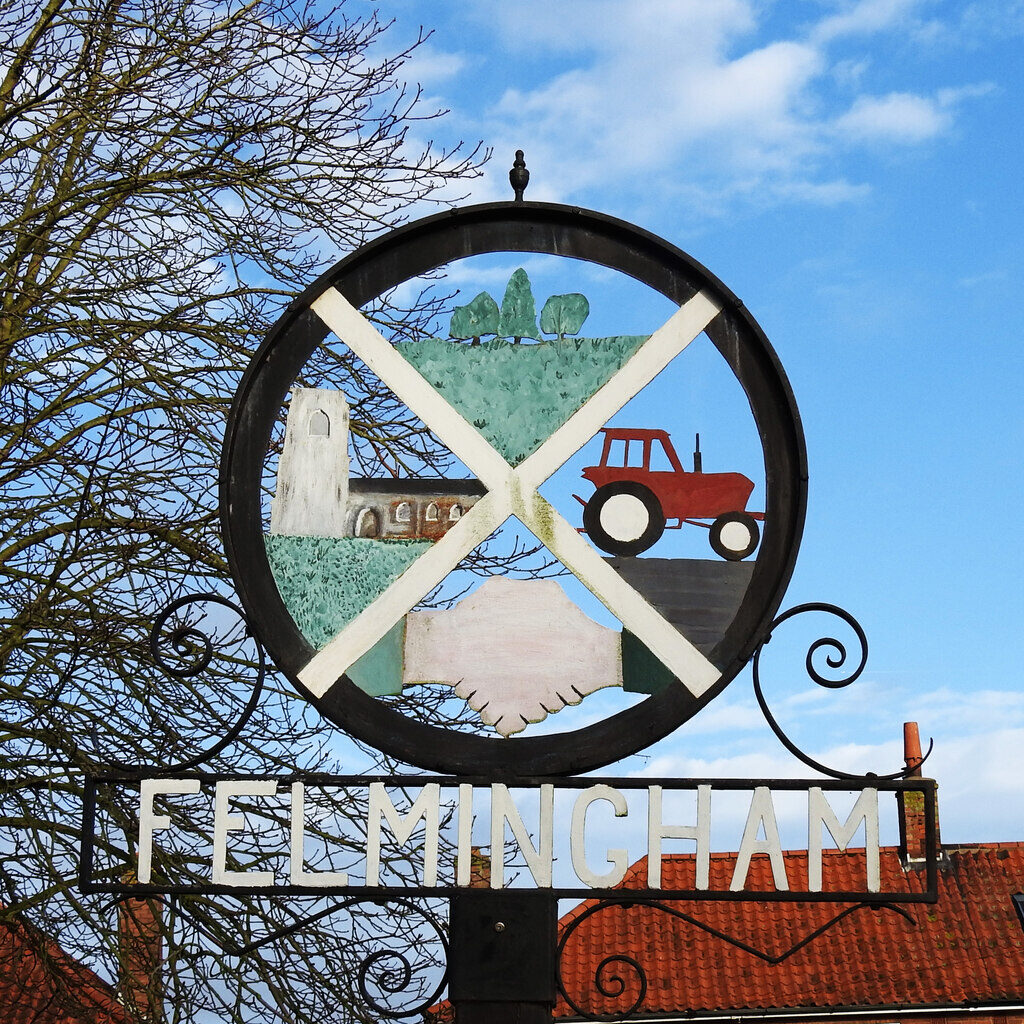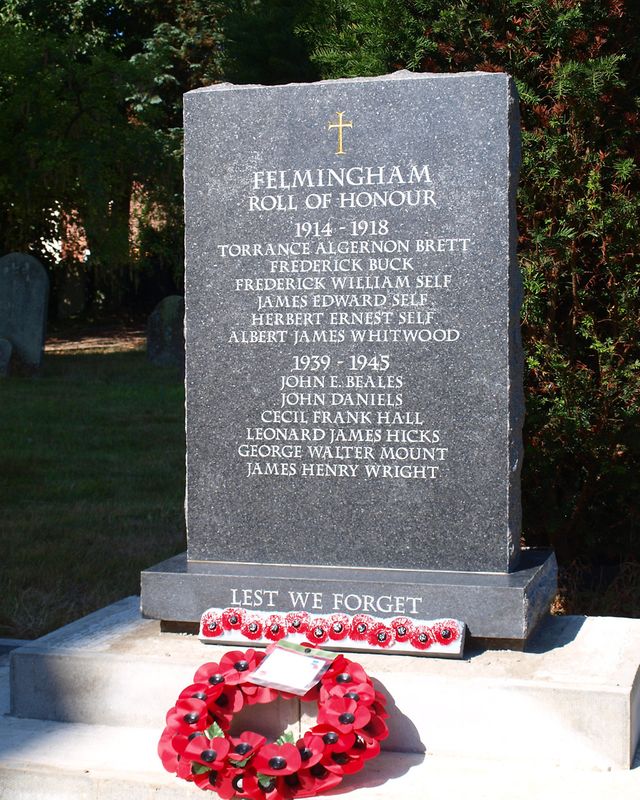Felmingham appears in the Domesday Book of 1086 as “Felmicham” and Felmincham”, meaning the “homestead of Feolma’s or Feolomaer’s people”. The land is recorded as held by King William 1, Roger Bogot and the Abbot of St Benet’s at Holme and consisted of 33 households, making it larger than most of the local settlements.
The earliest recorded artefacts found in the parish are Mesolithic in date and evidence of Neolithic and Bronze Age settlement have also been found.
Roman artefacts have been found throughout the parish, including part of a mould for casting broaches of a type worn by the followers of Boudica and is one of only three of its type found in the whole of the Roman Empire. This suggests that Roman metalworking may have taken in this parish. There is also evidence that a Roman temple may have existed along with a Roman settlement. The British Museum houses the “Felmingham Hoard” of Roman and Celtic Temple finds.
Objects from the Early and late Saxon period have been discovered during more recent building work at the church.
Unlike many other villages in the local area, Felmingham was not involved in the Wool Trade as the quality of the land was better suited for arable farming, which it still is today.
At the 2011 Census, the Village had a population of 561
The leader of the Peasant’s Revolt in Norfolk in 1381, John the Dyer or John Litetser, had a house in Felmingham. He found his livelihood threatened and led a large group of rebels in an attempt to seize Norwich. The Bishop of Norwich and his forces met the rebels on a heath just to the south of North Walsham. The Battle of North Walsham resulted in the defeat and capture of the rebels. As a result of his actions, Litester was hanged, drawn and quartered, with quarters being displayed at Norwich, Great Yarmouth, King’s Lynn and at his house at Felmingham, as a deterrent to further rebel uprising.,
The earliest gravestone in the churchyard dates from 1719 and marks the final resting place of William Talman and his wife Hannah. He lived at Felmingham Hall and was Royal Architect to the court of William and Mary and was involved in the redevelopment of some of England’s finest houses, including Chatsworth House in Derbyshire and Hampton Court Palace. At the time, he vied with Christopher Wren for commissions for many stately homes and buildings.
ST ANDREW’S CHURCH
The Church
The original church was probably built in 13th century, with the first recorded Rector (John Sampson) taking up Office in 1267. Wills dating from 1485 to 1546 record that money was left “for the building and finishing of the steeple”. The fact that the tower, although massive, has an unfinished look, suggests that the original intention to build an upper part may not have been carried out with the onset of the Reformation.
The nave was originally much longer and higher, with north and side aisles. The north aisle contained a chapel dedicated to St John the Baptist and the south aisle chapel was dedicated to St Mary. This contained an image of our Lady of Pity
However, in 1742 a fire destroyed much of the building, except the tower. It was rebuilt in red brick but using the original windows and south door and it re-opened in 1754. The footprint of the original aisles and the height of the roof can still be made out.
With the help of a generous bequest from Judith Bartram of Ruggs Farm who died in 1990, an extension on the north side enabled the provision of a toilet and kitchen and extensive renovation and refurbishment inside the tower. This work was carried out between 1988 and 2000.
The earliest gravestone still visible in its original position dates from 1719 and is the grave of William Talman. He lived at Felmingham Hall and was Royal Architect to the court of William and Mary and architect to some of England’s finest houses, including Chatsworth House in Derbyshire. It is sited in the area to the east of the chancel.
There are two Graves which are recorded as official War Graves by the Commonwealth War Graves Commission:
Rees Atkins (WW1) – in the area to the west of the tower. He is remembered on the Roll of Honour in Banningham church but was born in Felmingham
Leonard Hicks (WW2) – next to the gate leading to the car park.
A PDF version of the Felmingam Church History booklet can be viewed by clicking the link below…
Felmingham Church History

